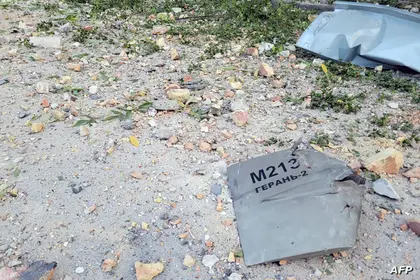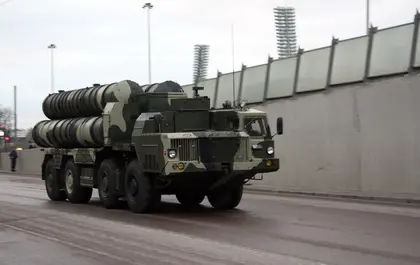Russian authorities have begun to install S-300 air-defense missile systems around St. Petersburg in response to recent successful Ukrainian drone strikes on facilities in the Leningrad region, as reported by the Russian Telegram channel ASTRA.
Footage captured by a local resident and posted on social media shows equipment maneuvering and blocking a road as it attempts to turn around.
JOIN US ON TELEGRAM
Follow our coverage of the war on the @Kyivpost_official.
“The S-300 is being positioned around St. Petersburg. So, guys, prepare for the worst,” a voice over the video footage says.
The voice asserts that “these complexes are being erected everywhere” in the region, turning the phone to showcase a specific S-300 equipment, stating: “I served on that one.”
Sources from Kyiv’s special services had previously informed Kyiv Post that on the night of Jan. 18, Ukraine conducted drone attacks on the Russian oil depot in St. Petersburg.
The source said a drone had flown over one of the estates of Russian President Vladimir Putin in Valdai before achieving a successful hit on the Petersburg Oil Terminal, Russia’s largest facility for the transshipment of petroleum products in the Baltic region.
By Jan. 21, further Ukrainian drones targeted the Novatek terminal in the port of Ust-Luga, Leningrad region, which sources told Kyiv Post was a special operation conducted by the Security Service of Ukraine (SBU) which resulted in a large-scale fire that necessitated the evacuation of employees.

Russia’s Overnight Drone Strike Damages Residential Houses in Kyiv, Cherkasy Regions
Kyiv Post was told that the Ust-Luga Oil terminal is crucial for Russia, processing fuel supplied to Russian troops:
“The successful assault on this terminal not only inflicts substantial economic harm on the enemy, disrupting their revenue streams for the war in Ukraine but also disrupts the logistical chain of fuel essential to the Russian military,” the source said.
“This move strategically hampers the occupiers' ability to sustain their forces, marking a significant setback in their ongoing aggression,” it added.
Situated 110 kilometers west of St. Petersburg near the Estonian border, the terminal is owned by Novatek, Russia's largest independent natural gas producer.
Both attacks marked the first strikes in the Leningrad region since the beginning of Russia's full-scale invasion of Ukraine.
What do we know about the S-300 air defense system
The S-300 is a family of Soviet medium-range anti-aircraft missile systems, with serial production initiated in 1975 and tests completed in 1978. The first S-300 regiment was deployed for combat duty in 1979.
By the late 1970s, this air defense system utilized over 20 missile variants, involving modifications, differing in missiles, radars, electronic warfare capabilities, and range.
Currently, Russia employs three types of missile: 5V55K, 5V55R, and 48H6 armed with high-explosive warheads weighing up to 144 kg.
The S-300 complex, comprises the launch vehicle, long-range surveillance radar, command vehicles, and a strike radar, that allows system elements to be located up to 40 kilometers apart.
Designed to combat strategic and tactical aircraft, cruise missiles, operational-tactical missiles, and ballistic missiles at altitudes ranging from 25 m to 27 km, with effective ranges of up to 100 km, the S-300 operates is said to be resistant to electronic countermeasures.
The long-range radar can track objects up to 300 kilometers away. The system is all-weather and adaptable to different climatic zones.
It's noteworthy that when S-300 anti-aircraft missile systems are grouped into air defense equipment, they effectively protect areas spanning tens of thousands of square kilometers from airborne threats. The S-300 remains widely regarded as one of the most potent anti-aircraft missile systems in use with Russian forces.
You can also highlight the text and press Ctrl + Enter






